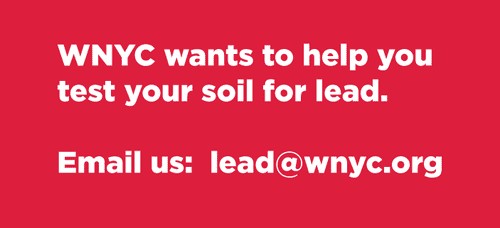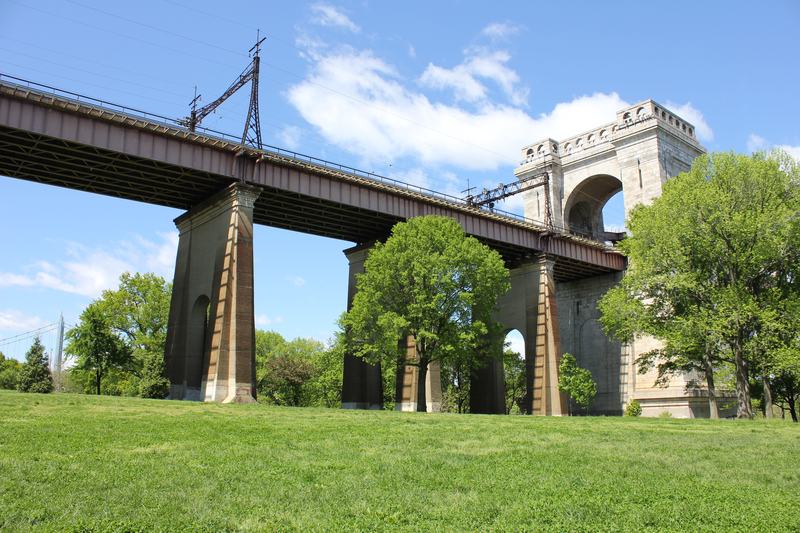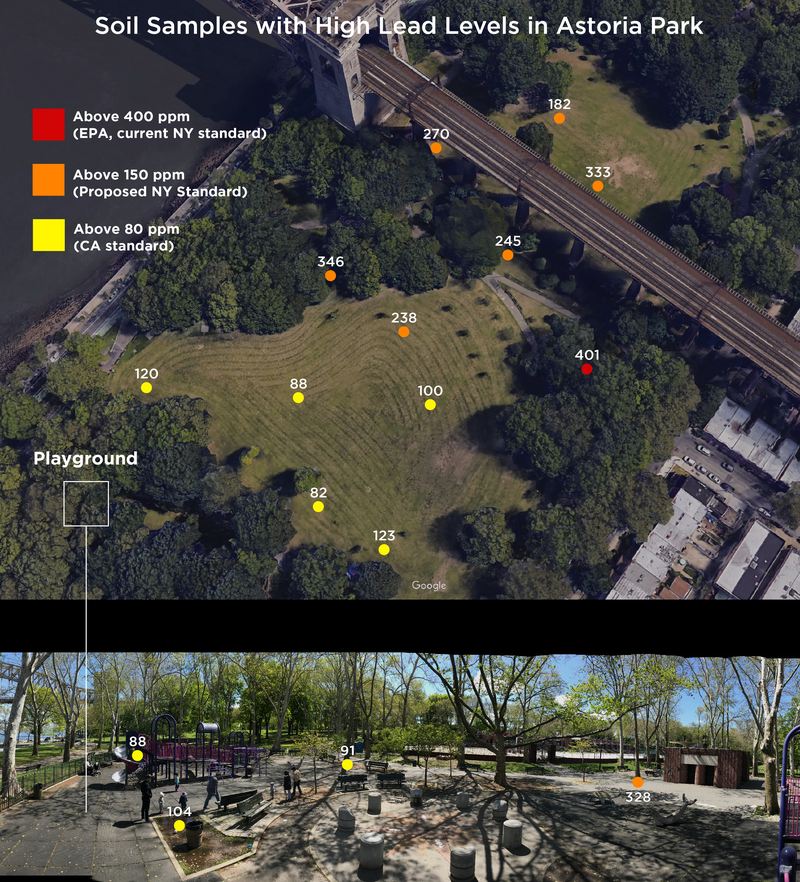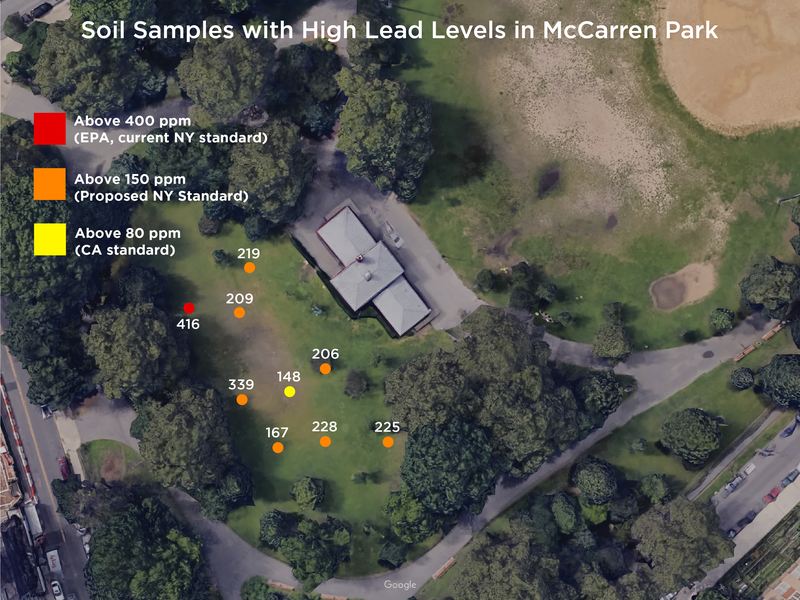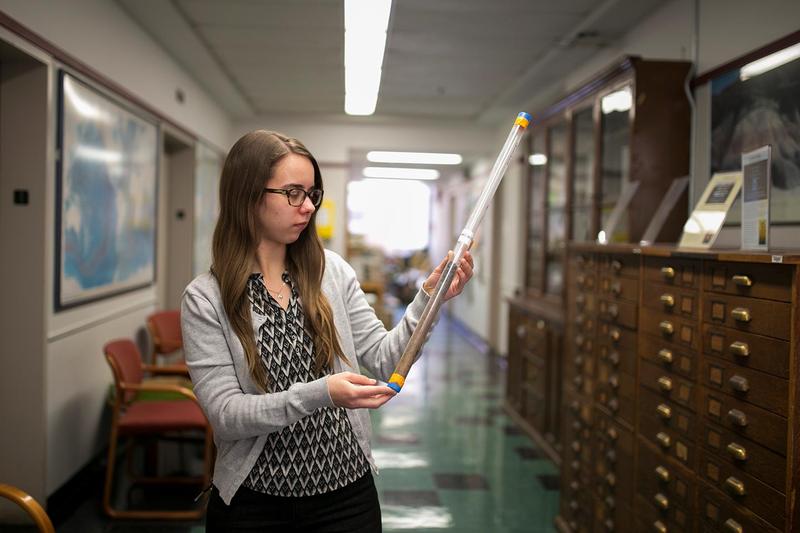Lead in the Land
City officials are divided on whether to do something about high levels of lead in soil. WNYC tested three public parks. Here’s what we found.
Before lead began to be phased out of gasoline in the 1970s, Americans emitted an estimated six million metric tons of a known neurotoxin through their tailpipes. Much of it entered the atmosphere and settled into the soil as tiny dust particles.
Today, that fallout — along with several million more tons of aging, exterior lead paint — is still there. And while we have some data on contamination levels in private yards in the city (spoiler alert: they’re high), the public has very little information about soil lead in public parks. And even if we did, local officials disagree on just how much danger it poses.
“Soil is not, I repeat not, a significant source of lead exposure for children in New York City,” the city’s health commissioner, Oxiris Barbot, announced at a City Council hearing on lead last fall.
Since 2005, the number of children in the five boroughs with elevated lead levels has dropped by nearly 90 percent. But each year, thousands of kids still test with a blood lead level above the Centers for Disease Control's action level of 5 micrograms per deciliter. And, given research showing that even amounts below that threshold can cause reduced IQ and hyperactivity, many public health experts argue that, in order to drive exposure rates down even further, our mitigation efforts will need to include lead in soil.
“Lead dust is totally invisible,” said Howard Mielke, a research professor at Tulane University who's studied contaminated soil in a number of U.S. cities. “It's easy to underestimate the type of damage that took place in urban environments.”
To get a clearer picture, WNYC tested the soil in Prospect Park and McCarren Park in Brooklyn, and Astoria Park in Queens — each with its own unique story of potential contamination: One, a vast, 19th-Century greenspace seemingly untouched by industrialization; another, once bordered by heavy manufacturing; and a third in the shadow of two major pieces of transportation infrastructure.
In all three, samples showed levels that exceed current standards, and were well above the tougher thresholds that many public health advocates have called for.
Astoria Park
Councilman Costa Constantinides was born and raised in Queens. Astoria Park lies at the heart of his district. “I've seen thousands upon thousands of children play in this park in my lifetime,” he said in an interview. “And they will continue to play there long after I'm gone.”
Last year, as part of a raft of proposals aimed at reducing childhood lead levels, Constantinides introduced a bill that would require the city to test soil for lead in public parks and remediate any areas shown to be highly contaminated.
The concern isn’t just about kids who eat dirt. As any parent of a toddler knows, dirty hands are continually going into mouths. And research in cities such as New Orleans, Detroit and Los Angeles suggests exposure to lead dust from soil can cause harm, both at the park and and at home.
"It can get blown into the house if the windows are open, or tracked in when the kids walk on the dirt and then walk into the house," said Dr. Morri Markowitz, who runs the Lead Poisoning Treatment and Prevention Program at The Children's Hospital at Montefiore.
In the data we do have for New York City parks, the Environmental Protection Agency found lead levels in a set of ball fields that were once home to a lead smelter in Red Hook, Brooklyn that far exceeded both federal and state guidelines.
“This is something we should take seriously,” said Constantinides, who serves as chairman of the council’s Environmental Protection Committee. “In cases where there is a proximity to contamination, a proximity to large bridges or infrastructure or other sources of pollution, that there should be testing done and steps taken to mitigate this potential danger.”
Two bridges cross above Astoria Park. At its southern end is the Robert F. Kennedy (née Triborough), which has carried vehicular traffic for over eight decades, many of them peak leaded-gas years. At the park's north end is The Hell Gate Bridge, an East River train crossing that was coated with a hardy layer of lead paint before it opened in 1917.
When it comes to measuring lead in soil, New York State currently uses a benchmark established in the 1990s. It states that a lead level is worrisome in "bare soil where children play" if it exceeds 400 parts per million (ppm). And due to the usually high foot traffic in New York City parks, even grassy areas can contain a lot of bare soil.
However, many public health experts view that 400 number as outdated. Some have calculated that a threshold of 150 ppm is more in keeping with the latest guidelines from the Centers for Disease Control, which maintains that no level of lead in children is safe. California, in an abundance of caution, lowered its standard to 80 ppm.
WNYC obtained 28 samples in the area surrounding The Hell Gate Bridge, which were analyzed by the Urban Soils Lab at Brooklyn College. The results: 32 percent tested above 150 ppm; 82 percent exceeded California’s standard. In one instance, an area directly below the bridge registered at 333 ppm, but only one — at 401 ppm — surpassed New York’s current guideline.
Additional samples taken from tree pits in the nearby Charybdis Playground showed lower levels overall, perhaps indicating the parks department has covered some of these areas with cleaner soil, although one came in at 328 ppm.
Prospect Park
Prospect Park was created in the 1860s out of farmland and a few last vestiges of remaining forest. As far as open land goes, it’s about as pristine as Brooklyn gets. And yet, test results weren’t all that different from Astoria Park.
Out of 23 samples collected, 35 percent were above 150 ppm; 74 percent exceeded 80 ppm. Among all three of the parks WNYC tested, the highest single sample — at 543 ppm — came from the wooded lawn that surrounds the Prospect Park Bandshell, where concertgoers sit in the summer.
McCarren Park
For much of their histories, Greenpoint and Williamsburg were like factory towns in the big city. At one point, Brooklyn produced nearly half of all the lead paint made in the U.S. In fact, there used to be a lead paint factory right next to McCarren Park, which was itself carved out of the industrial street grid a little over a century ago.
Our focus was on an oval-shaped plot at the northeast corner that’s typically crowded with picnicking families in warm weather. Historic insurance maps reveal a company that made window sashes, blinds and doors once occupied the site in the 1880’s. Present-day aerial images show large patches of bare soil throughout the park.
Out of 30 samples tested in this one area, 87 percent were above 150 ppm. All exceeded 80 ppm. The average lead level was 201 ppm, making McCarren the most contaminated park WNYC tested.
What To Make of These Results?
“In my view it's considered pretty high,” said Dr. Zhongqi Cheng, head of the Urban Soils Lab, “Especially if your kids are playing there, getting the dirt into their hand and mouth. I think you do need to minimize the exposure and health risk.”
Cheng recommends covering contaminated areas in parks — either with clean soil, mulch or landscaping fabric — as opposed to removing it, which can cause its own set of problems. The city already operates what it calls a "Clean Soil Bank" that helps identify uncontaminated sources of soil. These originate from construction projects in Queens that are digging up largely untouched glacial deposits that then get distributed to sites that need it.
That said, the lead levels WNYC found in parks are relatively low compared to many private yards. Cheng’s lab offers soil testing to the public for $10 a sample. It’s analyzed close to 3,000 of them from across the city, including community gardens. The highest tested at nearly 9,000 ppm. The average for many yards ranges from 400 to 1,200 ppm.
“We really have a lot more lead in these backyard spaces than we do in public parks,” said Franziska Landes, a Ph.D. candidate at Columbia University who’s conducted her own research on soil lead in North Brooklyn, which is home to a relatively high number of children with elevated blood lead levels. She's now comparing that data with backyard soil in the Upper West Side, where children’s lead levels are relatively low.
So far, she’s found little difference between the two. Soil lead in both neighborhoods far exceeds even New York's current standards. “In New York, I've just been very surprised at how high the levels are,” she said.
Cost vs. Risk
In light of these findings, Councilman Constantinides has also introduced a bill that would require landlords to test their soil and remediate problem areas. But in a rather testy exchange at that City Council hearing last fall, Barbot, the city's health commissioner, pushed back against the councilman’s proposals.
“I understand the inclination to want to test every single possible source, but this is an opportunity… “ she said, before Constantinides interrupted her. “This is a perfect opportunity," she continued, "to sort of remind us about matching the intervention to the level of risk.”
In an analysis of 219 children in the city with elevated lead levels, the health department concluded only one was exposed through lead in soil. The vast majority were cases of deteriorating lead paint in homes. And a focus on cutting off that source, Barbot believes, is what’s allowed the city to drive down the overall number of lead poisoning cases. That's despite the fact that, as WNYC reported, many of the requirements the city places on landlords to keep their buildings lead free have not been fully enforced.
To be clear, Constantinides said, no one has suggested the city only focus on soil. But Barbot’s concern is that requirements to test and remediate it — whether in privately owned yards or in public parks — will detract time and already-limited resources away from the mission. In the case of the ball fields in Red Hook, for example, clean up will cost an estimated $109 million, and much of the park has remained closed since 2015.
“We also worry,” Barbot warned the city council, “that these proposed mandates may have unintended consequences, such as reducing New Yorkers’ access to green spaces,” suggesting that other parks would have to be cordoned off until they can be fixed.
Informed Decisions
“Why does testing necessarily mean closing?” asked Landes in an interview. She also testified at the City Council hearing and was surprised by Barbot's response.
“Testing on a first order would be the most important thing, and then you can share that information,” said Landes. “You and I can make informed decisions about maybe where our children make mud pies and where they don't make mud pies. But you don't necessarily have to immediately close down a whole park just because there are a few samples that might be above a certain threshold.”
Landes believes the city should provide free soil testing to residents, much the way it currently offers free water testing through the Department of Environmental Protection by calling 311.
WNYC presented Barbot with its findings during an interview at the health department's offices in Long Island City, although she did not actually look at the data that was offered. Instead, she said there are a variety of simple measures parents can take to minimize risk.
“For example,” she said, “the most common advice that everybody's mother gives them when they're out playing in a playground is ‘Wash your hands.’”
Update May 22, 2019: After this story ran, the office of Corey Johnson, Speaker of the New York City Council, responded to WNYC with the following statement: “The council is concerned about limiting childhood lead exposure from all sources, including soil. We are working on a second round of lead bills, including bills that address lead levels in soil. We expect to pass those bills before the end of the year.”
Support for WNYC’s health coverage is provided in part by the New York State Health Foundation, improving the health of all New Yorkers, especially the most vulnerable. Learn more at www.nyshealth.org
